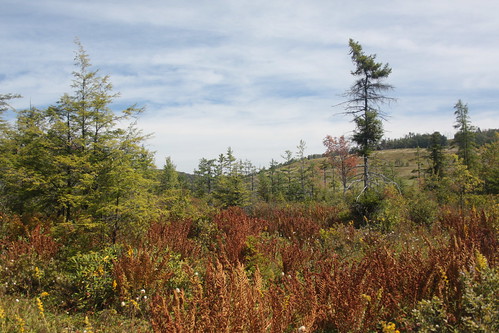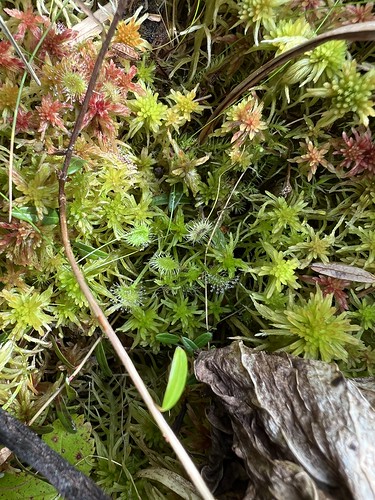Natural Heritage Program Spotlight: Fall Swamps
At this time of year, leaf watchers are enthusiastically traveling the region to catch the best show of color on our deciduous trees (and you can too—follow our Fall Foliage Reports here)! Nature certainly puts on a show of a bedtime routine before the winter snooze, but fall beauty does not only lie in the falling leaves. Smaller plants and conifers go through transitions of their own, or sometimes just provide an enduring and welcome carpet of green in an otherwise browning landscape. Wetlands in particular are enjoyable in the fall, having lost the crowds and blood-sucking bugs that may be a summer nuisance. Wetlands are often split into four types, each defined by its own set of soil, water, and vegetation characteristics. Here in Maryland we are fortunate to have all four to appreciate.
In the last HabiChat issue, we introduced you to some of Maryland’s Natural Areas, highlighting many of the summer features of our treasured wetlands. A fall or early winter hike in a swamp is a singular experience, less showy and green perhaps, but the underlying ecological processes are just as important. As leaves lie and vernal pools dry up, the smell of leaf and herbaceous plant decay should tell you a complex and vital biochemical process of nutrient recycling and sediment deposition is happening right before your eyes. Fall fungi often appear overnight and come in a variety of sizes, colors and shapes—some of them even glow!
Fish are slowing down metabolically, often shifting to deeper water to have enough oxygen to survive the winter under ice. Amphibians like marbled salamanders and aquatic insects have laid their eggs; their life cycles are just beginning as tiny bundles of future potential. Migratory birds are passing through, relying on wetlands for shelter and food (to see which birds are using our area, check out the Audubon migration explorer tool). Squirrels like our Delmarva fox squirrel are bustling about, collecting food and storing it for tasty winter snacks. Every living thing is perfectly timed to interact with everything else, connected even with us in a season of regeneration and quiet.
We hope you’ll enjoy these and other Natural Area wetlands this fall!
Happy Fall, HabiChatters!
With winter on the way, we turn to topics that inspire us in this spooky season of decreasing daylight. In this issue, I’m happy to share an introduction to glow-in-the-dark living creatures, a phenomenon that has always been one of my favorite marvels of the natural world. DNR’s resident bat expert, Dana Limpert, collaborates on a native animal feature about our favorite flying mammals. Plus, Outreach and Education Assistant Edwin Guevara describes some entertaining and educational outdoor activities for these dark evenings, and we suggest some Natural Areas to visit in this perfect season for hiking.
Stay warm,
Sarah Witcher
[email protected]
Click here to have HabiChat—the quarterly backyard wildlife habitat newsletter from the Wild Acres program—delivered right to your inbox!
In this Issue
Habitat Tip: Glow-In-The-Dark Backyards
Native Animal Profile: Our BFFs, Bats
Get Outside at Night: Experimenting with Light




